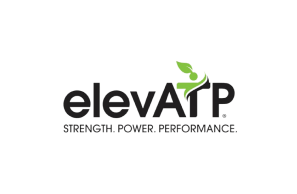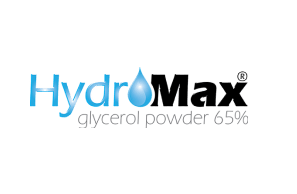3DPUMP-Breakthrough® has the momentum to become a household name among sports supplement users. The ingredients are scientifically backed and clinically...

INCREASE STRENGTH
INCREASE STRENGTH
The goal of “increase strength” involves improving muscular strength and endurance to help perform everyday tasks more easily while mitigating the risk of injury.
Ingredients
Specialty
Ingredients
Specialty Ingredients
Goal OVERVIEW
Increasing strength is a valuable health goal achieved through regular resistance training, progressive overload, and proper form in exercises like compound movements: adequate protein intake, a balanced diet, hydration, and restful sleep support muscle repair and growth. Consistency, variety in workouts, and consulting professionals ensure safe and effective progress. Prioritize warm-up and cool-down routines, utilize recovery strategies, and set achievable goals. Remember that building strength is a gradual process requiring patience, commitment, and personalized strategies based on individual fitness levels and health considerations.
What You Should Know
While building muscle and increasing strength share a connection, they represent distinct objectives. Muscle building centers on using nutrition, supplementation, rest, and specific exercise techniques to enhance muscle size. The focus is not on gaining strength; for example, techniques like giant sets aim to exhaust muscles with high repetitions and peak contractions. To do so, it requires lighter weights. Conversely, increasing strength involves lifting progressively heavier weights in a lower rep range. While muscle growth may result from lifting heavy weights, it’s not the primary goal. The contrast lies in pursuing greater muscle size and body weight versus gaining raw strength.
FOOD FOR THOUGHT
There are many ways to increase strength, such as Strength training exercises designed to overload your muscles and force them to adapt by becoming stronger. Resistance training exercises use weights or other forms of resistance to challenge your muscles. High-intensity interval training (HIIT) is a type of training that alternates between short bursts of intense activity and periods of rest. These are the more recognized approaches to building strength through exercise.

SHAGANDHA® BY SABINSA
Shagandha® is a standardized powdered extract from the roots of Withania somnifera, commonly known as ashwagandha. Shagandha® offers various health benefits, including reducing stress, anxiety, and insomnia while improving cognitive function, reducing inflammation, and boosting the immune system. It is available in capsules, powders, and teas and is often used in herbal mixtures. Considered to be a breakthrough Adaptogenic.
Sponsored Content
FAQ
Increasing strength quickly involves targeted training, proper nutrition, and adequate recovery. While significant strength gains typically take time and consistent effort, there are strategies you can employ to maximize your progress in a shorter time frame.
Below are 15 tips to help you increase strength more rapidly:
1. Progressive Overload:
- Gradually increase the resistance or intensity of your workouts. This challenges your muscles and encourages them to adapt and grow stronger.
2. Compound Exercises:
- Focus on compound exercises that work multiple muscle groups, such as squats, deadlifts, bench presses, overhead presses, and rows. These exercises recruit more muscles and stimulate more significant strength gains.
3. Train with Heavy Weights:
- Lift heavy weights that are challenging for you but still allow you to maintain proper form. Aim for sets of around 6-8 reps per set.
4. Shorter Rest Periods:
- Decrease the rest periods between sets to keep your muscles engaged and create metabolic stress that promotes strength gains.
5. High-Frequency Training:
- Train each muscle group more frequently throughout the week. This can help stimulate muscle growth and adaptation more quickly.
6. Full Range of Motion:
- Perform exercises through their full range of motion to engage more muscle fibers and improve muscle strength.
7. Include Isometric Holds:
- Incorporate isometric holds (holding a position without moving) at the end of a set to stimulate muscle growth and increase strength.
8. Proper Nutrition:
- Consume enough calories and protein to support muscle growth and recovery. Protein intake is particularly important for building and repairing muscle tissue.
9. Hydration:
- Stay well-hydrated, as dehydration can impact muscle performance and strength.
10. Adequate Sleep:
- Aim for 7-9 hours of quality sleep each night. Sleep is crucial for muscle recovery and growth.
11. Dynamic Warm-Up:
- Perform a dynamic warm-up to increase blood flow to muscles and improve range of motion before lifting.
12. Supplements:
- Consider supplements like creatine monohydrate, which has been shown to enhance strength and muscle performance.
13. Avoid Overtraining:
- While pushing yourself is essential, avoid overtraining, which can lead to fatigue and injury. Allow adequate time for recovery.
14. Listen to Your Body:
- Pay attention to your body’s signals. If you experience pain or discomfort, stop the exercise and consult a healthcare professional.
15. Consistency:
- Consistency is key. Stick to your training plan and give your body time to adapt and grow stronger.
It’s important to note that safety and proper form are paramount when increasing strength quickly. If you’re new to strength training or have any underlying health conditions, consider working with a fitness professional or personal trainer to ensure you use proper techniques and follow a suitable program. Rapid strength gains are achievable, but they should be pursued safely and sustainably to prevent injury and ensure long-term progress.
To increase strength effectively, it’s important to focus on compound exercises that engage multiple muscle groups and require the activation of your core stabilizers. Compound exercises stimulate greater muscle growth and lead to overall functional strength improvements.
Below are 15 of the best exercises to incorporate into your strength training routine:
1. Squats:
- Barbell back squats, front squats, and goblet squats are excellent for building lower body strength, targeting the quadriceps, hamstrings, glutes, and core.
2. Deadlifts:
- Conventional and sumo deadlifts work the posterior chain, including the hamstrings, glutes, lower back, and grip strength.
3. Bench Press:
- The bench press targets the chest, shoulders, and triceps. Variations include the flat bench press, incline bench press, and decline bench press.
4. Overhead Press (Military Press):
- Overhead presses work the shoulders, triceps, and upper back. You can perform them standing or seated.
5. Pull-Ups/Chin-Ups:
- Pull-ups and chin-ups are effective for building upper body strength, especially in the back, biceps, and shoulders.
6. Rows:
- Bent-over, barbell, and dumbbell rows help strengthen the back, lats, and upper body.
7. Lunges:
- Lunges target the lower body muscles, similar to squats. They also improve balance and stability.
8. Dips:
- Dips primarily work the triceps, chest, and shoulders. You can perform them using parallel bars or a dip machine.
9. Push-Ups:
- Push-ups engage the chest, shoulders, triceps, and core. Modify the intensity by adjusting hand placement and incline.
10. Barbell Hip Thrusts:
- Hip thrusts focus on the glutes and hamstrings, contributing to strong hip extension.
11. Farmers Walk:
- This exercise involves walking while holding heavy weights (dumbbells or kettlebells) to build grip strength, core stability, and overall strength.
12. Clean and Jerk:
- An Olympic lift that combines a clean (lifting the barbell to shoulder height) with a jerk (pressing it overhead). It requires coordination and full-body strength.
13. Snatch:
- Another Olympic lift involves a rapid lifting of the barbell from the ground to overhead. It engages many muscle groups and improves explosive power.
14. Romanian Deadlift (RDL):
- RDLs target the hamstrings and lower back while emphasizing proper hip hinge mechanics.
15. Cable Pull-Through:
- This exercise targets the posterior chain and hip extension, helping to improve strength and stability.
When performing these exercises, use proper form and technique to prevent injuries. Start with a weight that challenges you but allows you to maintain good form. Gradually increase the weight as you become more comfortable and more substantial. Warm up before your strength training session and incorporate stretches for flexibility and mobility is also a good idea. If you’re new to strength training or have any health concerns, consider working with a fitness professional or personal trainer to ensure you perform the exercises correctly and safely.
The repetition range you should use to increase strength depends on your training goals, fitness level, and the specific phase of your strength training program. Different repetition ranges target different aspects of strength, such as maximal strength, hypertrophy (muscle growth), and muscular endurance.
Here are some typical repetition ranges and their associated benefits:
1. Low Reps (1-5):
- This range is often used to build maximal strength. Lift heavy weights for fewer reps, focusing on lifting the most weight you can handle with proper form.
2. Moderate Reps (6-10):
- This range is effective for building a balance of strength and muscle size. It’s a good compromise between lifting heavy and promoting muscle growth.
3. High Reps (10-15+):
- High-rep ranges are typically used for improving muscular endurance and increasing muscle size (hypertrophy). These reps also help with refining movement patterns and increasing time under tension.
It’s common to incorporate multiple repetition ranges over time to stimulate different adaptations and prevent plateaus when working on increasing strength.
Here’s a general guideline for using different repetition ranges in your strength training program:
1. Strength Phase (1-5 reps):
- Focus on lifting heavy weights with proper form for low repetitions. Rest between sets is longer (2-3 minutes) to allow for recovery.
2. Hypertrophy Phase (6-10 reps):
- Shift to moderate rep ranges to promote muscle growth. Rest periods may be shorter (1-2 minutes).
3. Endurance Phase (10-15+ reps):
- In some cases, including higher-rep sets can help build endurance and provide a different stimulus for your muscles. Rest periods may be shorter.
It’s important to note that individual responses can vary. Additionally, as you progress in your training, your optimal rep ranges shift over time. Variation in your routine is essential to keep your muscles challenged and prevent adaptation plateaus.
Remember these key points:
- Always prioritize proper form and technique over lifting heavy weights.
- Gradually increase the weight as you become stronger to continue challenging your muscles.
- Focus on quality reps rather than just aiming for a specific number.
- Allow adequate rest between sets, especially during low-rep strength training.
- Listen to your body and adjust the rep range based on your feelings and progress.
To design an effective strength training program tailored to your goals and needs, consider working with a fitness professional or personal trainer who can provide personalized guidance and program design.
While no “magic” ingredients guarantee strength gains on their own, certain nutrients and dietary components play a role in supporting muscle function, recovery, and overall strength development. These nutrients help provide the foundation for practical strength training and optimal physical performance.
Here are some key ingredients to consider:
1. Protein:
- Protein is essential for muscle repair and growth. It provides the building blocks (amino acids) necessary for recovery after strength training. Sources include lean meats, poultry, fish, eggs, dairy products, legumes, and plant-based protein sources.
2. Creatine:
- Creatine is one of the most researched and effective supplements for increasing strength and muscle mass. It helps provide quick energy during short bursts of intense activity, enhancing strength training performance.
3. Branched-Chain Amino Acids (BCAAs):
- BCAAs (leucine, isoleucine, and valine) are amino acids that help reduce muscle breakdown during exercise and support muscle recovery.
4. Beta-Alanine:
- Beta-alanine is an amino acid that can increase muscle endurance during high-intensity activities, contributing to strength performance.
5. Omega-3 Fatty Acids:
- Omega-3 fatty acids are anti-inflammatory and can contribute to overall muscle health and recovery.
6. Vitamin D:
- Vitamin D plays a role in muscle function, bone health, and overall strength. Adequate levels of vitamin D are essential for maintaining optimal physical performance.
7. Magnesium:
- Magnesium is involved in muscle contraction and relaxation, making it important for proper muscle function and strength development.
8. Zinc:
- Zinc supports protein synthesis, immune function, and recovery, which can contribute to strength gains.
9. Iron:
- Iron is important for delivering oxygen to muscles and promoting energy production. A deficiency in iron can lead to decreased physical performance.
10. Carbohydrates:
- Carbohydrates provide the energy needed for intense strength training sessions. They replenish glycogen stores and support optimal workout performance.
11. Antioxidants:
- Antioxidants found in fruits and vegetables help reduce oxidative stress caused by intense exercise, promoting recovery and overall well-being.
12. Hydration:
- Staying well-hydrated is crucial for muscle function, energy production, and overall performance.
While these ingredients can support strength development, they work best with a well-balanced diet and a structured strength training program. Prioritize whole, nutrient-dense foods to ensure you get the necessary nutrients to support your goals. If you’re considering incorporating supplements, consult a healthcare professional to ensure they’re appropriate for your needs and goals.
Related Videos
Articles
TeaCrine® is referred to by its suppliers, Compound Solutions, as a "feel-good energy" due to its ability to provide energy...
Capsaicin®, the compound that gives chili peppers their heat, can increase body temperature. When you consume Capsimax®, it can stimulate...



















